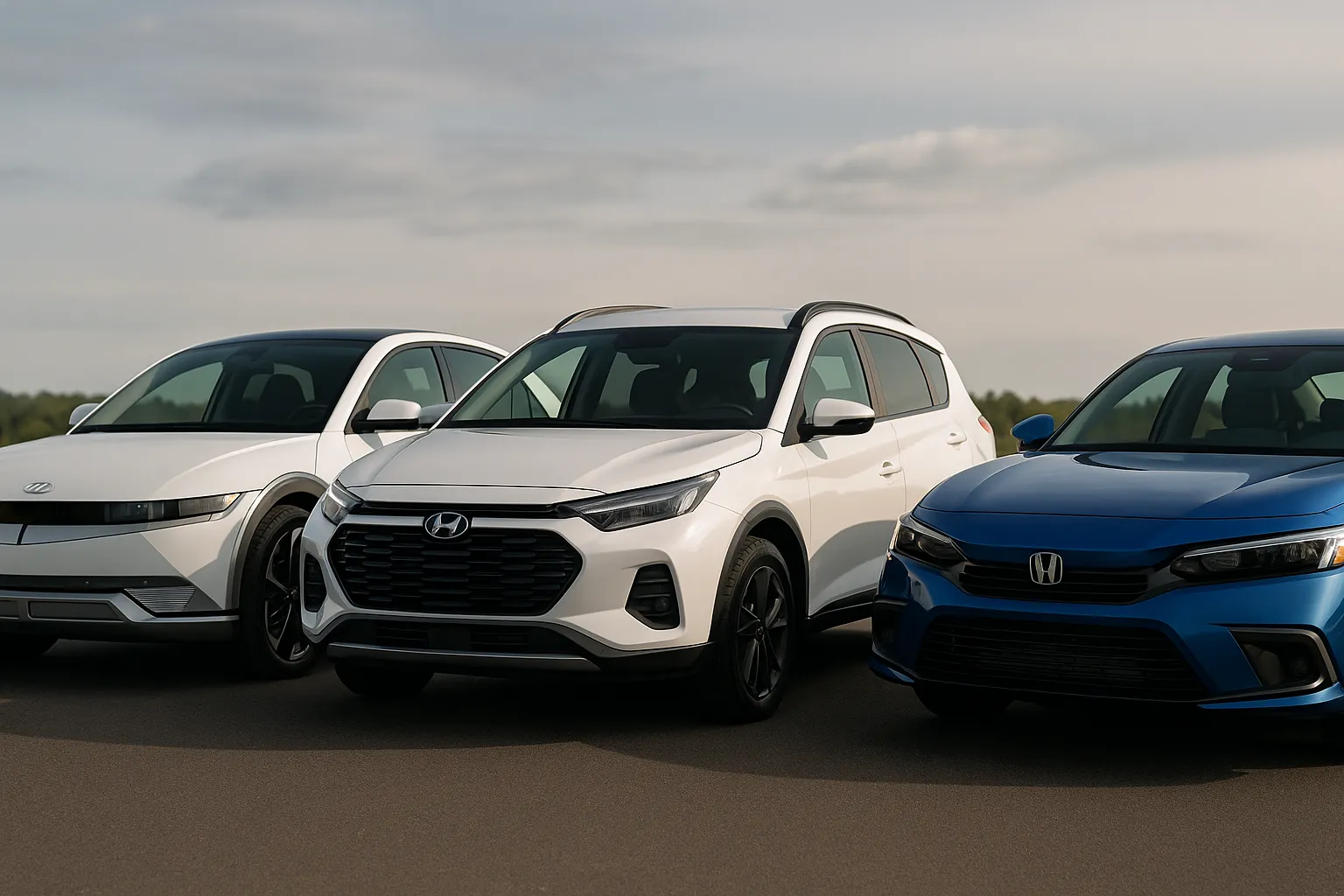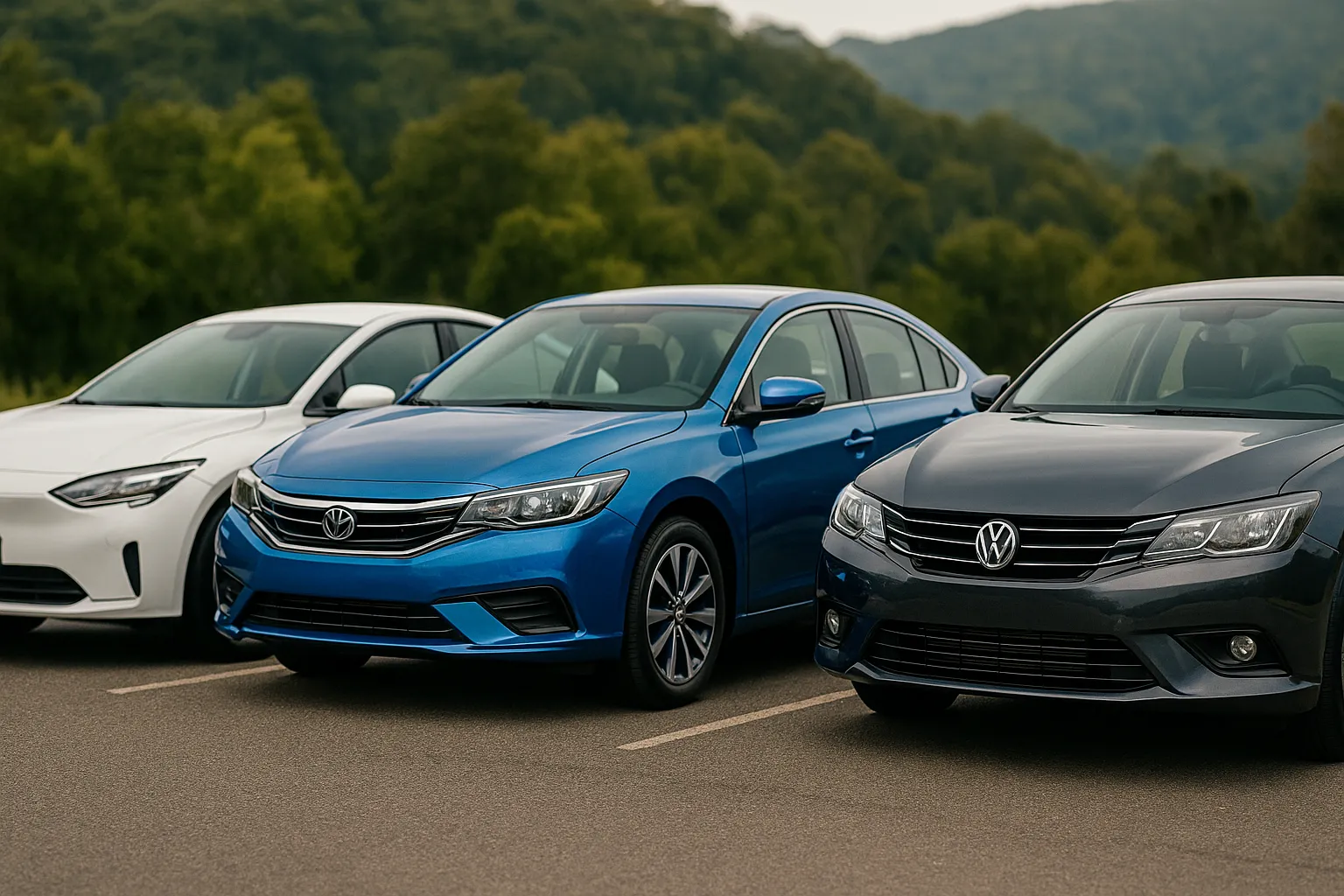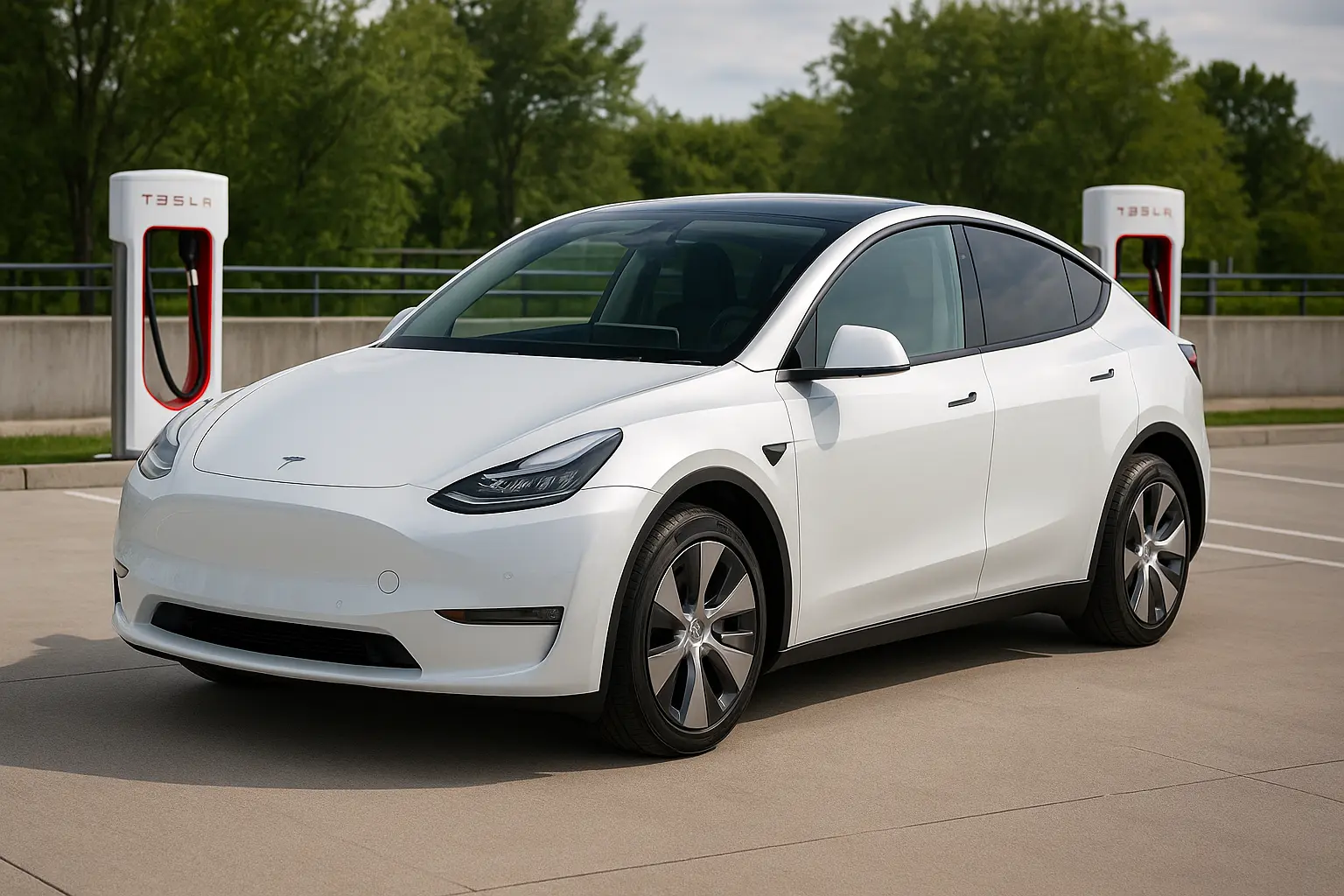Choosing the right car in 2025 isn’t as straightforward as it used to be. With more electric vehicles (EVs) on the road, hybrids bridging the gap, and petrol cars still holding strong in popularity and infrastructure, Aussie drivers are spoiled—and sometimes confused—by the options.
So which one should you buy? An EV to future-proof your driving and slash fuel costs? A hybrid for the best of both worlds? Or a petrol car for sheer familiarity, price, and freedom?

In this in-depth comparison, we’ll break down:
- The key differences between EVs, hybrids, and petrol vehicles
- Total ownership costs including fuel and maintenance
- Range and charging/refuelling convenience
- Environmental impact
- Performance and driving experience
- Government incentives and resale value
1. Understanding the Basics – What Are EVs, Hybrids, and Petrol Cars?
Electric Vehicles (EVs)
EVs are powered entirely by electricity using a large battery pack and electric motor. No internal combustion engine is involved. You plug them in to charge—at home or public stations.
Popular examples in Australia 2025:
- Tesla Model Y
- BYD Seal
- Hyundai Ioniq 6
- Kia EV6
- Volvo EX30
Hybrid Cars
Hybrids combine a petrol engine with one or more electric motors. There are two main types:
- HEVs (Hybrid Electric Vehicles): Recharge their battery via regenerative braking.
- PHEVs (Plug-in Hybrid Electric Vehicles): Can be charged via a plug and driven in electric-only mode for short distances (30–80km usually).
Popular examples:
- Toyota Corolla Hybrid
- Mitsubishi Outlander PHEV
- MG3 Hybrid+
- Kia Niro Hybrid
Petrol Cars
Traditional internal combustion engine vehicles powered solely by petrol. No electric motor support.
Popular examples:
- Mazda CX-5
- Toyota Hilux
- Subaru Outback
- Honda Civic
2. Purchase Price – Is the Cheapest Always the Best?
- EVs are typically the most expensive upfront due to costly battery tech. Expect $40,000–$80,000+ for most models in Australia.
- Hybrids sit in the middle. Non-plug-in hybrids can start as low as $30,000.
- Petrol cars are the cheapest upfront, with plenty of models under $25K.
Example comparison:
| Model | Type | Starting Price (AUD) |
|---|---|---|
| BYD Dolphin | EV | $38,890 |
| Toyota Corolla Hybrid | HEV | $31,000 |
| Kia Cerato Petrol | Petrol | $27,000 |
Winner (Price): Petrol
Best Value (Long-Term): Hybrid or EV (based on running cost)
3. Running Costs – Fuel vs Charging in 2025 Australia
Petrol Cost:
- Average price per litre in Australia: ~$2.00
- Medium-sized petrol car uses 7–9L/100km
- Cost per 100km: ~$14–$18
Hybrid Cost:
- Petrol usage drops to 4–5L/100km
- Cost per 100km: ~$8–$10
EV Cost:
- Home charging: ~$0.25/kWh
- Public charging: $0.40–0.65/kWh (some fast chargers higher)
- Average EV efficiency: 15–18kWh/100km
- Cost per 100km (home): ~$3.75–$4.50
- Cost per 100km (public): ~$6.50–$11.70
Winner: EV (especially if you charge at home with solar)
4. Maintenance & Repairs – Which Car Saves You Trouble?
- EVs: Lowest maintenance – no oil, no spark plugs, fewer moving parts.
- Hybrids: Moderate – regular petrol engine servicing + battery system checks.
- Petrol cars: Higher service frequency and parts prone to wear.
Average annual maintenance cost:
| Type | Est. Annual Cost |
|---|---|
| EV | $300–$500 |
| Hybrid | $400–$700 |
| Petrol | $500–$1,000 |
Winner: EV
5. Driving Range and Refuelling/Charging Convenience
EV Range in 2025:
- Most EVs offer 350–500km range.
- Charging times vary:
- Home (AC): 8–12 hours
- Fast DC (public): 20–60 minutes
Hybrid Range:
- 800–1,200km with combined tank and battery.
- No charging anxiety.
Petrol Range:
- 600–900km, depending on model and tank size.
- Refuelling time: 3–5 minutes
Winner (Range & Convenience): Petrol and Hybrid
Winner (Urban Driving): EV
6. Environmental Impact – Green Driving in 2025
- EVs: Zero tailpipe emissions. However, CO₂ depends on electricity source.
- With solar: near-zero impact.
- Hybrids: Lower CO₂ than petrol but still emit.
- Petrol: Highest CO₂ output. Bad for urban air quality.
Average CO₂ emissions (per km):
| Type | Emissions (g/km) |
|---|---|
| EV | 0 (tailpipe) |
| Hybrid | 90–120 |
| Petrol | 150–220 |
Winner: EV
7. Performance & Drive Experience – Smooth vs Punchy
- EVs: Instant torque, super smooth, silent. Great for urban and highway.
- Hybrids: Often prioritise efficiency over fun. Better than petrol in urban.
- Petrol: Varies – sportier models available, engine noise may appeal.
Winner (Smoothness & Urban): EV
Winner (Raw Fun): Depends on model, petrol sports cars still reign
8. Government Incentives & Road Costs in 2025 Australia
EV Incentives:
- State-level rebates up to $3,000–$6,000
- Stamp duty discounts
- Free rego in some states (e.g., ACT)
- Fringe benefit tax exemptions for fleets
Hybrid Incentives:
- Limited; some states offer discounts for PHEVs only.
Petrol Cars:
- No financial support; some cities are considering ICE restrictions by 2030.
Winner: EV
9. Resale Value & Market Trends
- EVs: Resale values are strengthening, especially with popular models (e.g., Tesla, BYD, Hyundai).
- Hybrids: Toyota hybrids hold their value extremely well.
- Petrol: Still strong today, but long-term value may drop as electrification continues.
Trends:
- By 2030, over 50% of new car sales in Australia expected to be EVs or hybrids.
- Petrol-only cars may see decreasing demand post-2027.
Winner (Short-Term Resale): Hybrid
Winner (Future-Proof): EV
10. Infrastructure – Are We Ready for EVs Yet?
Australia’s EV charging network has grown significantly in 2025, with:
- 2,500+ public charging sites nationwide
- Fast chargers now on most major highways
- Apps like Chargefox, Evie, and PlugShare making navigation easy
Still, regional gaps exist. If you're rural, a hybrid or petrol car may still be more practical.
Winner (Urban): EV
Winner (Regional): Hybrid or Petrol
11. Best Use Cases – Which Car Suits Which Aussie Lifestyle?
City Commuter
- Best: EV or hybrid
- Low running cost, stop-start traffic efficiency, no range stress
Family with Long Trips
- Best: Hybrid
- High fuel efficiency, long range, flexible
Rural or Off-Road Driver
- Best: Petrol or hybrid 4x4
- Infrastructure still catching up for EVs in the bush
Budget Buyer
- Best: Hybrid or petrol
- EVs still carry a premium, though second-hand EVs are emerging
12. Final Verdict – What Should You Buy in 2025?
| Category | Best Pick |
|---|---|
| Upfront Price | Petrol |
| Running Cost | EV |
| Maintenance | EV |
| Range | Hybrid |
| Green Driving | EV |
| Long-Term Value | EV or Hybrid |
| Infrastructure Fit | Hybrid or Petrol |
| Performance Feel | EV or Petrol (varies) |
Recommended:
- City or Metro Areas: Go EV
- Outer Suburbs or Mixed Use: Hybrid
- Remote/Regional: Petrol (for now)

Conclusion
In 2025, the best car for Aussie drivers comes down to how and where you drive.
EVs are winning on cost, tech, and environmental fronts—but hybrids are the smart middle ground, especially for those outside the metro bubble. Petrol cars still have their place for now, especially in rural and performance-oriented segments.
Before buying, weigh your driving habits, location, access to charging, and budget. The great news? Aussies now have more clean, efficient, and exciting options than ever before.
Leave a comment
Your email address will not be published. Required fields are marked *



















